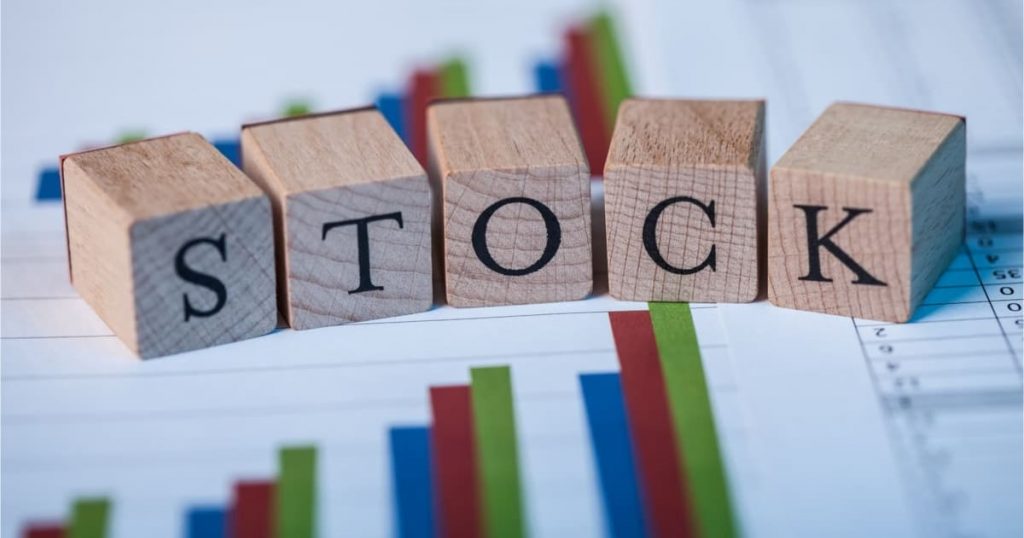You’re ready to start investing. Where do you begin?
Before even considering jumping into investing, get the basics done first:
When you’ve reached at least the “3-month” mark in your FEF, then you can begin investing, while simultaneously continuing to fill your Emergency Fund until completed.
#1 Set Aside A Regular Amount Weekly or Monthly. Once you’ve decided how much you can commit from your monthly budget to investing, set aside the money from your paycheck. Try not to co-mingle with your spending money. Automatic transfers from your checking account to your savings account are a great way to make sure the money gets set aside and not used.
#2 Research mutual funds and/or ETFs that offer diversification and low-to-moderate risk. Also, when starting small, look for funds that have low minimum requirements or allow you to purchase in regular monthly installments. ETFs (exchange traded funds) don’t have minimum requirements (as long as you can purchase one share), so they may seem easier to purchase, but many of them are too pricey to get into initially. When you’re starting small, a mutual fund is often the better way to go. You’ll have to do a bit of comparison shopping to determine what will work better for your situation.
Two good places to start your research are Morningstar and US News Money. Or just do an internet search for “Best Mutual Funds” and see what you uncover. Be sure to only consider no-load funds, and funds with no 12-b fees. Fees can really hurt your returns, so watch those carefully during your search. A simple search for “mutual funds with low minimums” will get you off and running. Always do your due diligence: do as much research as you possibly can before investing in anything!
#3 Once you have set aside enough for your required minimum contribution, transfer the money to your mutual fund. It works best if you can also set up recurring monthly or quarterly transfers so that adding to it happens automatically. Adding to it is crucial to growing your nest-egg.
#4 Set up your mutual fund to automatically reinvest dividends. Put the power of compounding to use right away!
* Not sure what type of investment account to use? I cover that further on in this article. Keep reading. *

Where do I begin when starting small?
If you’re starting with a very limited amount of capital to invest, you should look into discount brokers such as Scottrade or E*Trade, especially if you decide to invest in ETFs or individual stocks.
Because it’s difficult to truly diversify with an ETF (I don’t know of any one ETF that balances across asset classes), I would recommend you start out with low-minimum mutual funds. Vanguard is well-known in the field for offering not only low-minimum funds, but funds with the smallest fees in the business. Charles Schwab has very low minimums ($100) for about 50 of its funds, with no strings attached. Other fund companies, such as USAA, offer low-min funds with the requirement that you commit to adding to it monthly. All of these are worth checking into. If you invest directly with the mutual fund company, you avoid the extra transaction costs of purchasing shares through a broker.
One of the nice things about buying mutual funds instead of ETFs is that you can purchase partial shares of a mutual fund, but not of an ETF. That way, all your money is working for you at once. Later, when you have more leeway with your money, you may want to switch to ETFs for the benefits they offer over mutual funds (expense ratios and entry prices have a lot to do with this).
What type of fund should I begin with?
You should start with an investment vehicle that is inherently diversified and not too risky. Your hard-earned savings is too precious to blow on something speculative. How conservative you go depends on what you can stomach, as well as where “Mr. Market” is in the market cycle: Is the stock market going up or down? Are we in a recession, or in recovery mode? These factors don’t matter as much when you plan to invest conservatively and for the long run, but they do matter if you’re “jumping in with both feet” or plan to invest more aggressively.
Don’t be in a big hurry to grow your money right away! Most likely, a decision to go aggressive will backfire fairly quickly, and not only will you lose much of your meager investment, but you may very well get too discouraged to continue. Remember that it will take time to grow. Little-by-little will get you there.
To start off, take a look at funds like VTINX, VWELX, PRPFX, or UFSGX to see what they hold, and look at other funds with similar strategies or risk factors. Write down all the ones that interest you, then let it rest a day or two. Revisit these funds after a few days, and determine which one would best suit your needs as a new investor.
When starting small, use a Set-It-and-Forget-It strategy, and build it up over time. Once you’ve built up your investment to a more sizeable amount, then you can start thinking about other types of investments and investment strategies. But for now, start here
REMEMBER:
Make sure you are also building your FEF simultaneously, if not already fully funded. If the stock market is going down (known as a “bear market”), focus on building your FEF while you wait for the market to turn around again. Once you have your 3-6 month Emergency Fund filled, then you can focus on saving more aggressively for your investment portfolio.
Your Emergency Fund is more important than your investments at this point.
When starting small, it WILL TAKE TIME. Have patience. Keep plugging away.Proverbs 13:11 says, “Wealth gained hastily will dwindle,but whoever gathers little by little will increase it.”
What Type of Account Should I Use?
Is this investment portfolio for retirement? For use in 5-10 years? To augment income?
Before deciding what type of account to use, determine its purpose.
If it’s strictly for retirement, use an IRA (individual retirement account). There are two kinds: traditional and Roth. Do some research to determine which one is best for your situation. For most people, a Roth IRA is the better option. Note that, with a Roth, if you find yourself desperately needing that money again for some unforeseen reason, you can take out up to the amount you have put in, without having to pay any penalties or taxes. But you’ll have to leave the earnings alone. Look into both kinds of IRAs before deciding.
If it’s for use before retirement, use a regular taxable account. Be sure to take taxes into consideration when using this type of account. For example, use funds that are more tax-efficient, or learn about taking a “realized loss” to offset a “realized gain” to minimize the tax-hit. Be on the lookout for ways to beat the “Tax Man”, but don’t let it be the determining factor in your investment decisions.
If you want to build an income portfolio, decide if you want it building an income for retirement, for use in a few years (i.e. before retirement), or both.
NOTE: There’s nothing wrong with having both types of accounts. In fact, its a good idea. That way, you can meet short-term/critical needs with the stability and liquidity of a regular savings account, mid-term needs with the accessibility of a taxable account, and long-term needs with the tax-advantages of a retirement account.
If your investment is earmarked for college savings, there are tax-advantaged accounts available specifically for that type of portfolio. In 529 Accounts, you typically just pay into the program, so there are no other investment decisions to make. In an ESA (Education Savings Account), also known as a Coverdell Account, you typically determine what types of investments to purchase within the account. Both types of college-savings accounts have their advantages and restrictions. Dig deeper to find out if either of these are right for you
BOTTOM LINE
The only way to get ahead, short of a large inheritance or winning the lottery (which have their own set of troubles and woes), is to:
spend less than you make avoid debts ave invest regularly (no matter how small)let it compound over time START NOW! And get your kids to do the same with their allowance or job earnings to set them up for financial success early.
TIME PASSES: WHAT NEXT?
After you have a few thousand dollars invested, you will want to start thinking about more diversification and growth opportunities. If you’ve been in a diversified, conservative fund, start shopping for a more aggressive stock fund to add to your portfolio to juice your returns.
only use no-load funds. There are plenty available, so there’s no need to pay for a fund when you can find a comparable one that doesn’t charge you a fee for purchasing shares
small and mid-cap stocks tend to outpace large-cap stocks, and add a bit more risk to your portfolio. A basket of stocks, whether an ETF or a mutual fund, helps mitigate some risk by diversifying across many stocks (sometimes hundreds), rather than into any one stock that could unexpectedly shoot higher or fall out of favor. These make a great addition to a core portfolio.
also look into international stocks. Diversifying away from the U S is one way to not become too dependent on one country’s stock market. You could either rebalance your portfolio by selling some shares of your core fund and picking up shares of another fund (splitting it however you’re comfortable) or just building up shares in the new fund over time like you did with the first fund.
This may be dictated by investment minimums. For example, if you want to open the small/mid-cap mutual fund NBGNX, you’ll need to free up at least $1000 just to open it. There are also ETFs that would fit the bill, such as IJR or RFG. You may have to switch to a brokerage account once you reach this point, depending on what investments you decide to pursue.
An example portfolio might be 80% PRPFX and 20% NBGNX. (Both of these funds are available at Scottrade with no transaction fees.) NOTE: While this would make a great simple portfolio, I have not scrutinized these funds in a while, so this is not necessarily a recommendation at this time. I would, however, recommend that you take a look for yourself.
These are just some ideas to get you started. As always, do your own due diligence, and never buy any investment that could keep you up at night with worry.
*Full Disclosure: I do not own any of the funds mentioned as of this writing, although I have owned each of them in the past, and may again in the future.*
Be sure to review Portfolio Allocations and Portfolio Management before making decisions about moving to the next level with your investments.

